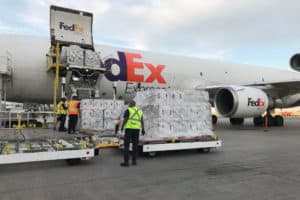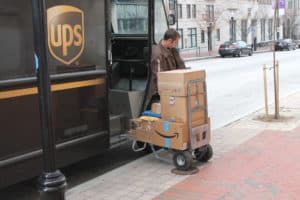Ever wondered what the life of a FedEx pilot is like up in the blue yonder? Hint: It’s not just about the view from the cockpit at 35,000 feet.
In this post, you’re going to get an inside look at the patterns that keep your packages moving across the skies.
Quick Takeaways:
- FedEx pilots manage a mix of domestic and international flights, with dynamic schedules informed by weather, demand, and operational needs.
- Schedules are based on seniority, with tradeability options for more seasoned pilots seeking greater control over their routes.
- The variety of routes keeps the job fresh, but also requires flexibility to maintain work-life balance amidst changing flight patterns.
What Does a Day in the Life of a FedEx Pilot Look Like?
Imagine soaring through the skies with the sunrise peeking over the horizon — that’s how some days can kick off for a FedEx pilot. These aviation professionals often start their days before the crack of dawn, depending on the flight schedule. Wake-up times can vary greatly, but for an early flight, they could be out of bed and brewing coffee by 3 or 4 a.m.
Pre-flight preparations are a given and involve a thorough check of the weather, the aircraft’s technical status, and coordination with the rest of the crew. Each pilot meticulously reviews the flight plan and any specific cargo requirements, ensuring everything’s in tiptop shape for a smooth operation.
Once they’re up in the air, flight durations can be as short as a quick hop between regional hubs or as long as crossing continents — sometimes exceeding over 12 hours for those long-haul intercontinental treks. Pilots need to be on top of their game, keeping a vigilant eye on the systems and staying ready to respond to the unexpected.
Layovers break up the monotony and can last anywhere from a few hours to overnight stays, especially after long-haul flights to ensure proper rest. During this time, pilots can rest, explore the layover city, or catch up on personal time, which is a nice little perk of the job.
FedEx pilots often experience a rich variety in their daily schedules. One day could see them mastering a transatlantic fight, while the next day could be filled with shorter regional deliveries. This variety keeps them on their toes and ready for any aerial challenge.
How Do FedEx Pilots Know Their Schedules?
Like clockwork, FedEx pilots receive their flying schedules through a blend of high-tech solutions and efficient communication channels. The company leverages cutting-edge technology and systems, such as FedEx’s own pilot scheduling software, to ensure that each pilot knows their upcoming flights well in advance. The schedule outlines flight times, routes, layover details, and crew pairings, creating a clear roadmap for their upcoming flights.
Typically, pilots get a glimpse into their future travels a few weeks in advance, allowing ample time to plan their personal lives around their flight commitments. The stability and predictability of knowing their schedules ahead of time is a significant plus, helping them to balance the demands of work and home.
What Kind of Routes Do FedEx Pilots Fly?
FedEx pilots are the unsung heroes in the sky, ensuring that packages reach global destinations come rain or shine. Their typical routes encompass a mesh of domestic and international pathways, connecting a vast and intricate network vital to international commerce and logistics.
For short hops, they might maneuver between regional distribution centers — quick, frequent flights that keep the cargo moving steadily. In contrast, long-haul flights stretch across continents and oceans, linking major global marketplaces with FedEx’s impressive logistic might. A flight from Memphis to Tokyo, for instance, is a testament to the reach and complexity of FedEx’s international routing.
Routes are influenced by a slew of factors, not least among them weather conditions and customer demand. FedEx pilots must be ready to adjust to thunderstorms, snow, and anything else Mother Nature throws at them. Moreover, around holidays or during special events, demand can spike, shaping FedEx’s dynamic routing to meet customers’ needs swiftly.
One unique tidbit that adds to the complexity of route planning is logistic synchronization. FedEx operates on a tight schedule, with packages processed and loaded shortly before departure. Pilots often have to work in harmony with ground crews to ensure packages are transported quickly and efficiently, which can mean adjusting flight plans on the fly to accommodate last-minute cargo.
This intricate dance between machines, pilots, ground crews, and the ever-changing demands of commerce ensures that FedEx continues to uphold its reputation as a reliable shipping behemoth. Every successful delivery starts with a pilot skillfully navigating the skies, adhering to a schedule finely tuned for global efficiency.
Do FedEx Pilots Have Recurring Routes or Do They Change Regularly?
When it comes to slicing through the clouds, FedEx pilots often find themselves on a mixed platter of routes that vary from time to time. Sure, there may be some consistency with daily or weekly runs, but it’s not all about circling the same patch of sky. Fluctuations in global demand, seasonal shifts, and operational changes mean that routines can shuffle like a deck of cards.
This variability is a double-edged sword. On one side, pilots get to experience a buffet of destinations, which can be exciting and keeps the job fresh. However, this unpredictability can also stir the pot when it comes to the work-life balance. Family time, social gatherings, and personal hobbies can sometimes take a backseat as pilots might find it tricky to nail down plans when their schedules are subject to change.
FedEx pilots have to be as adaptable as a Swiss Army Knife because, let’s face it, their personal life can hinge on their flight patterns. They might be home for a stretch, enjoying a regular coffee at their favorite spot, then, in a whoosh, they’re swapping lattes for layovers in lands afar.
Can You Choose Your Own Routes as a FedEx Pilot?
Now, wouldn’t it be as cool as the other side of the pillow if pilots could pick and choose their routes? Well, it’s not exactly an á la carte menu, but rather a meal plan with seniority as the main ingredient. At FedEx, it’s not a free-for-all; pilots bid on schedules based on their rank within the company—think “first come, first served,” but with wings.
Senior captains might snag their preferred routes more often. They’ve put in the flight hours, navigated through thick and thin, and earned their stripes, quite literally. So, if a pilot dreams of regularly waking up to the Paris skyline, climbing the seniority ladder is the game.
For the newer aviators or those lower on the totem pole, it’s a bit like rolling the dice. They often get their schedules served up without much say, but with time and experience, they too can have more control over their aerial journeys.
Here’s where we dish out a nugget of gold that’s not common in your run-of-the-mill blog: Tradeability. Some pilots may not realize that once they attain a certain standing, they might have the capacity to swap shifts with their colleagues. This little twist can give them a dash of autonomy over their schedule, adding a pinch of predictability for planning life on land.
In the grand skies of FedEx, while you can’t exactly chart your own course at the drop of a hat, you’re not entirely at the mercy of the winds either. As pilots climb the seniority staircase, their ability to influence their flight paths gradually expands, much like their horizons.
To summarize, every FedEx pilot’s journey is different. Routes and schedules may change, but so do seasons and destinations. It’s a continuous cycle that requires resilience and adaptability—traits that are at the heart of every pilot who dons the FedEx colors. With time and persistence, pilots can navigate towards a schedule that balances their love for aviation with their life on the ground.







